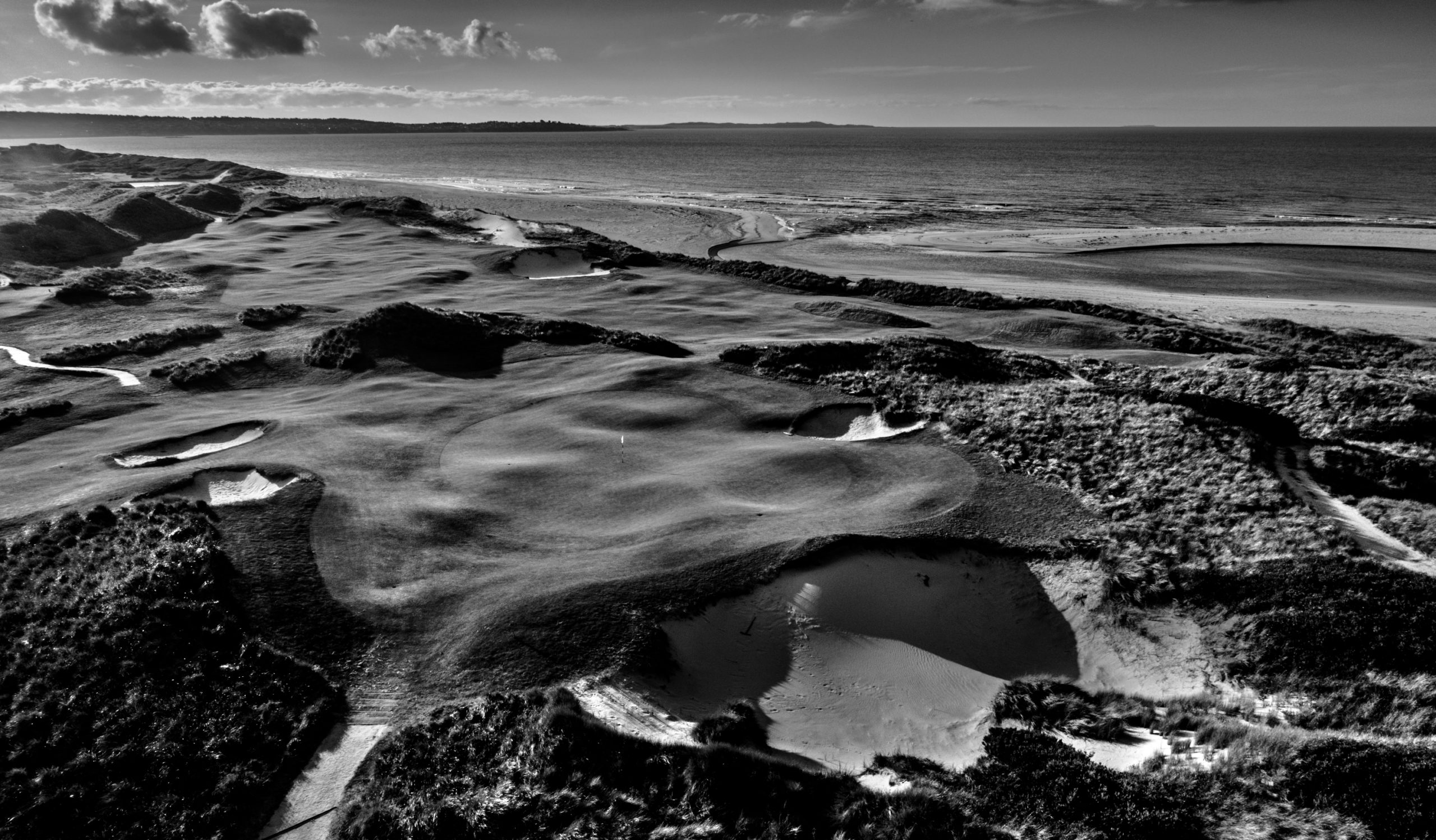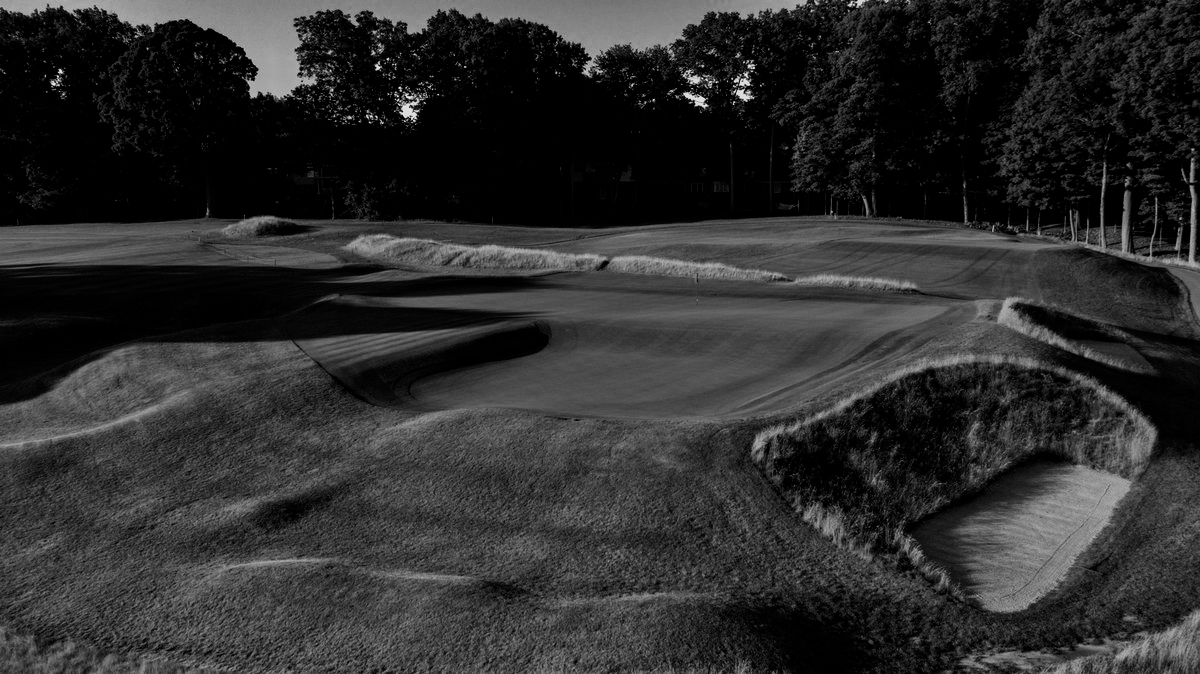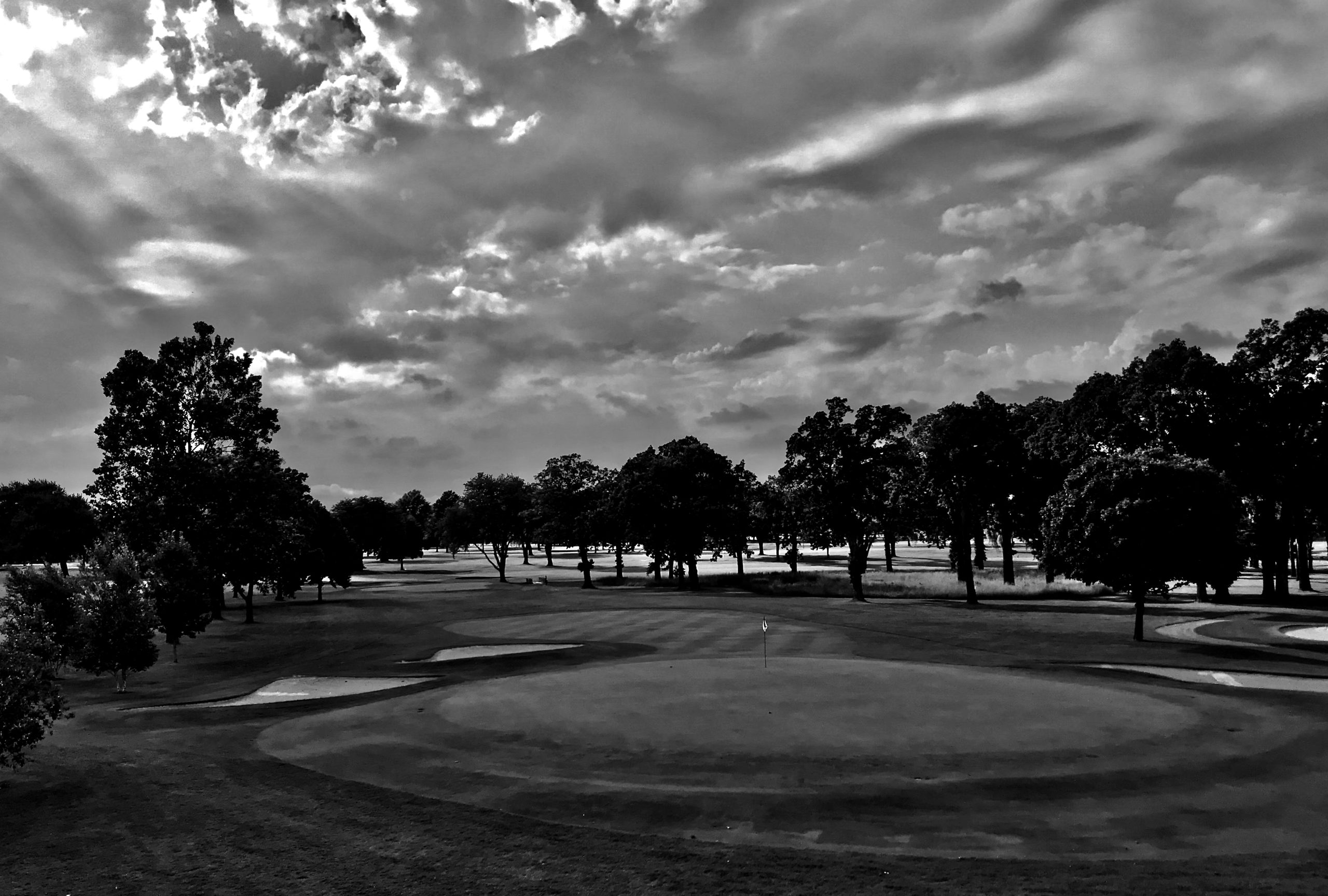At some point in your life as a golf course architecture aficionado, you’ll stumble across a photograph of the No. 12 green at Sitwell Park Golf Club, a Sheffield-area course that doesn’t attract as much international attention these days, despite the name “Alister MacKenzie” on the marquee. You, if anything like me at that point in my understanding of golf course design and construction, will squint your eyes and grin in the “you gotta be kidding me” method.
What is now known on message boards simply as the “Sitwell Park green” was created to combat a routing problem struck by MacKenzie during 1913. The routing required two greens, nos. 12 and 18, sit next to each other while requiring an uphill approach. If he had performed a common “cut and fill” to build the greens atop the hill, the putting surfaces would be both blind and punished but the newly-steepened slope. MacKenzie chose to create a large green that poured down from the top of the hill, full of roll almost unimaginable to the modern player (which you can see below).
Even at the time, local players were scandalized and the green disappeared, replaced with a far more pedestrian model.
The Sitwell Green remains celebrated online. Tom Doak, a proponent, built No. 13 at Barnbougle Dunes as a tribute to the lost putting surface. But even that, one of the funkiest greens on the planet, seems a bit watered down compared to the inspiration.
I began to wonder…with minimalist golf being all the rage, what’s preventing the creation of Sitwell-level green slopes?
 The one remaining photo of the infamous Sitwell Green. (Photo Cred: Wikimedia Commons)
The one remaining photo of the infamous Sitwell Green. (Photo Cred: Wikimedia Commons)
Yeah, I mean, obviously the answer is “modern green speeds.” But what does that even mean? What were non-modern green speeds?
Sorry if you’ve heard this one before: The greens at Oakmont were believed to “stimp” around 5 during the ‘30s. Thirty years later, the same course was rolling at 9.5…then considered an absurdist number next to the 7 that other championship courses were running. And now Oakmont is playing at about 15 during the U.S. Open.
The most basic rule is that the faster the green, the less pinnable sloped areas become. Although you can place a hole on a significant slope when there’s an opportunity to stop, stopping doesn’t happen at those speeds. Ask Phil Mickelson what he thinks about pinning slopes at U.S. Open speeds.
That’s the basic reason why a Sitwell doesn’t sit well with the modern age. Even at a modest green speed — let’s say a 9 — MacKenzie’s Lovecraftian green is unreasonable.
 Tom Doak’s tribute to the Sitwell Green at Barnbougle Dunes. (Photo Cred: Renaissance Golf Design)
Tom Doak’s tribute to the Sitwell Green at Barnbougle Dunes. (Photo Cred: Renaissance Golf Design)
Alright, but to clarify my question: Why not create a course adapted to Sitwellian slopes? Are “modern greens” simply unable to operate at such slow speeds?
Referring to them as “modern greens” is slightly misleading; it suggests that something about the product is causing the speed. Are the turf strains being used for modern greens promoting roll unlike that of MacKenzie’s day and age? No, not really. The issue is less “modern greens” and more “modern green maintenance,” according to Samuel Beckman of Emergency 9 Golf.
“It’s probably less about the turf and more about modern green construction,” he says. “So today you built it to spec with a sand base and drainage and tile and all these things so when the green hits it it sounds almost hollow.”
“To spec” refers to USGA specifications, which offer instruction on constructing greens for maximum efficiency. Although these specs are generally helpful in keeping greens healthy, they’re somewhat based on the assumption that superintendents will be pushing quicker green speeds when possible.
The shorter the cut of the grass blade, the quicker the roll. That said, the shorter the cut, the higher the stress level on the plant. A good way to counteract blade stress is a longer, healthier root system, which is encouraged through the USGA’s specifications via building a sand base atop native soil.
There’s nothing that prevents superintendents from getting stimp speeds down to the standards of yore. Except for member input…and that’s really the answer at the end of the day.
“The short answer is that people demand it,” Beckman says. “Because how many times do you go to a club and the first thing any member tells you is ‘we have the best greens in whatever state or county or city’…That’s the first thing they always want to tell you is that their greens are the best.”
The only standard they use for measuring “best” is by speed. Playing around Columbus privates, I’ve heard Beckman’s theoretical narrative often. What are the subtle double breaks on a Ross green when my Nicklaus green rolls two points higher on the Stimp scale?
Beckman relates two anecdotes to demonstrate the point. His childhood club was Meadowbrook, a Willie Park Jr. in the Detroit area that was recently overhauled by Andy Staples with the intention of bringing it in line with Park’s architectural identity. This included a trip to Huntercombe to study some of the Scot’s wonkiest putting surfaces. Membership accepted, albeit warily in some instances, the newly dramatic greens. One change they would not accept, however, was Staples’s suggestion that the greens would need to move slower.
 Although not quite Sitwellian, an example of a Willie Park-style green with moments of plentiful slope. (Photo Cred: The Fried Egg)
Although not quite Sitwellian, an example of a Willie Park-style green with moments of plentiful slope. (Photo Cred: The Fried Egg)
“I know for a fact that Andy has been back to Meadowbrook and has told them that the greens are too fast. The membership just kind of rejects that notion,” Beckman says. “They’ve always been fast. Regardless of what he did to them. Some greens are more changed than others. But the membership would never go for those things going any slower. It’s always been like that, since I was five-years-old. Fast, firm.”
Likewise, Beckman is a member at Glen Flora in the Chicago area, and has done renovation work there. The closing hole is an 180-yard par three that slants severely from right to left. Beckman has left the green largely untouched, despite it running about 12 on average, because membership appreciates the extreme difficulty in finishing with a par. But even he, a hair over scratch, has acknowledged that the near impossibility of pulling off shots to certain pin positions has made him reconsider the current state of the green. The solution would either be to soften the right-to-left, or slow down the green speeds. One seems less likely than the other.
“Everybody complains about it but when [the superintendent] has the greens going at 10 or 11, which happens early on in the year, people complain about how slow they are,” he says.
 A look at Glen Flora’s notorious closing par three. There are plans to expand the green for more pin placements…but not to soften its tough grade. (Photo Cred: Emergency 9 Golf)
A look at Glen Flora’s notorious closing par three. There are plans to expand the green for more pin placements…but not to soften its tough grade. (Photo Cred: Emergency 9 Golf)
“Speed is addictive,” as Michael Hurdzan has stated. There is, among American private memberships, a literal need for speed.
As has been the story elsewhere in golf, there has been a move in a different direction from the crop of “minimalist” architects, including Doak, Gil Hanse, and the Rob King-Tad Collins tandem, particularly on the public side of the golf spectrum. Each has created courses with dial-pushing green contours; a short list might include Old Macdonald for Doak, Sweetens Cove for King-Collins, and particularly Streamsong Black for Hanse (notably, none of these greens are USGA spec).
What’s interesting is that these architects don’t seem to have watered themselves down for their private audiences. I contacted members at Ballyneal (Doak), Lost Dunes (Doak), and Boston Golf Club (Hanse) — all are known for their dramatic greens — and according to my sources, all play in the 10-ballpark…a significant (and necessary) drop from the speeds seen at my local Robert Trent Jones II.
It seems that these architects have some sway over more recent generations of private golf members, helping them to understand the true strength of a great green.
But does this mean we can eventually expect full Sitwells? Probably not.
 This is far from the best representative of a nuts green from Doak at Bandon, but I haven’t played Old Macdonald yet and I didn’t take my camera out too much at Pacific. More importantly, I like this photo. (Photo Cred: BPBM)
This is far from the best representative of a nuts green from Doak at Bandon, but I haven’t played Old Macdonald yet and I didn’t take my camera out too much at Pacific. More importantly, I like this photo. (Photo Cred: BPBM)
First, although architecture-aware golfers are more likely to embrace slower green speeds, there are limits to their patience. We’re simply too comfortable within the modern range of speeds, and that’s going to be tough to step back from. It’s like playing Tiger Woods PGA Tour 13 and jumping between the modern Augusta and the sepia-tone Augusta of the first Masters. The slopes are eye-opening and, even with the slowing of putting speeds programmed into the latter, it’s difficult to adjust to the needs of a ‘30s green.
Difficulty adjusting is a death knell for bold ideas in golf, and otherwise.
Second, even if Mike Keiser may be the most driving force in the move back to medium-speed greens, his interest in such old-world course design only goes so far. He expressed to Doak during the construction of Pacific Dunes that he didn’t want bold internal contouring that could push well-struck approaches to the opposite corner of the green from the flagstick (which Keiser perceived would irritate his template “retail golfer”). Likewise, it’s rumored that Hanse unofficially lost the Sheep Ranch project when Keiser played the extreme greens at Streamsong Black.
If such a course were to emerge, it would be on the Sweetens Cove approach to fame…no big news event…just sitting there and waiting for cult status to materialize. No big-name golf management company wants to hear their course is going to run a 7 on the Stimp. That’s just too far from what’s acceptable.
Sitwellian greens are a tough ask for somebody interested in launching a golf course, and maybe even too tall an ask for envelope pushers like Doak, Hanse, and King-Collins.
But hey, if you want to be mentioned alongside those guys, feel free to run with this concept.